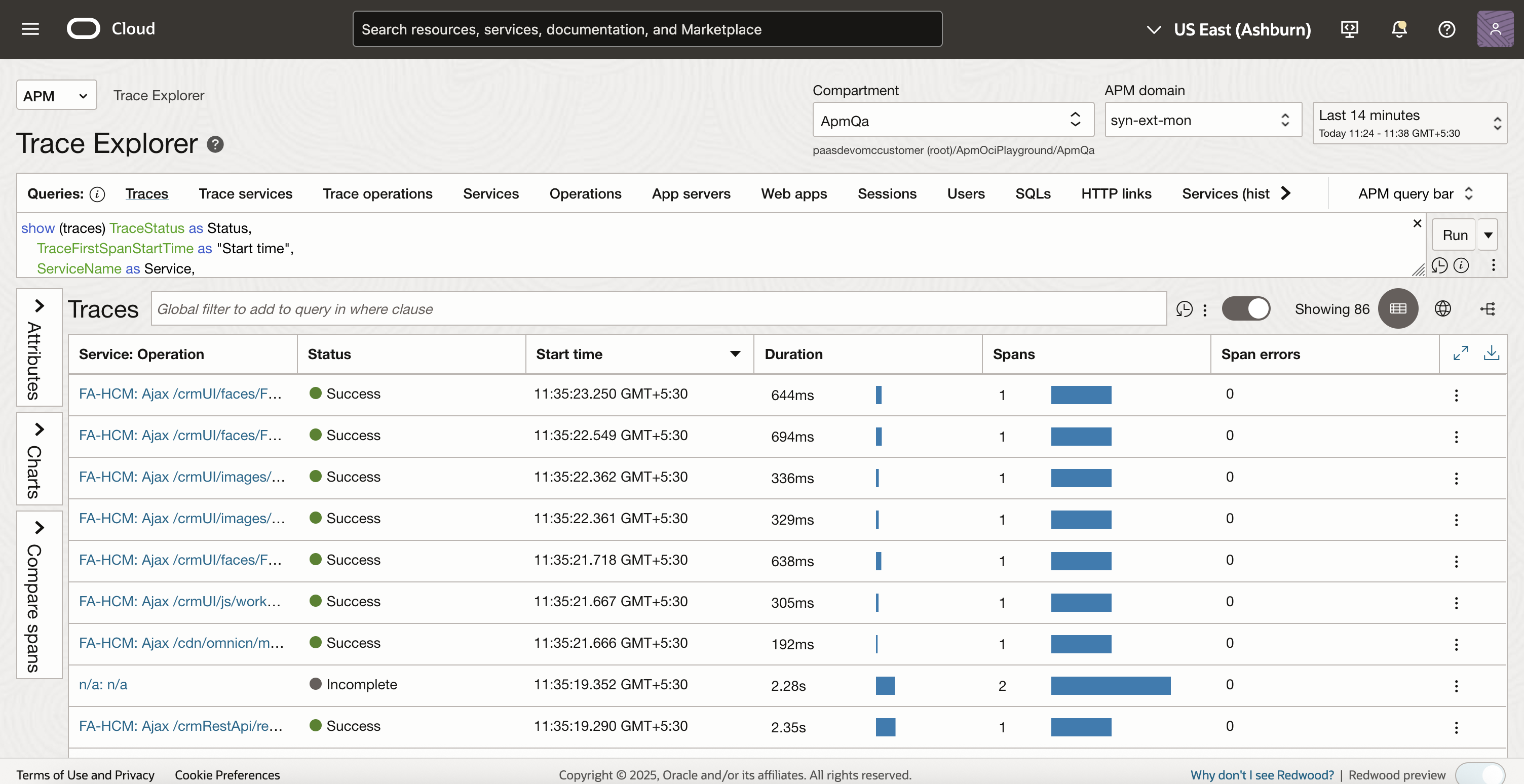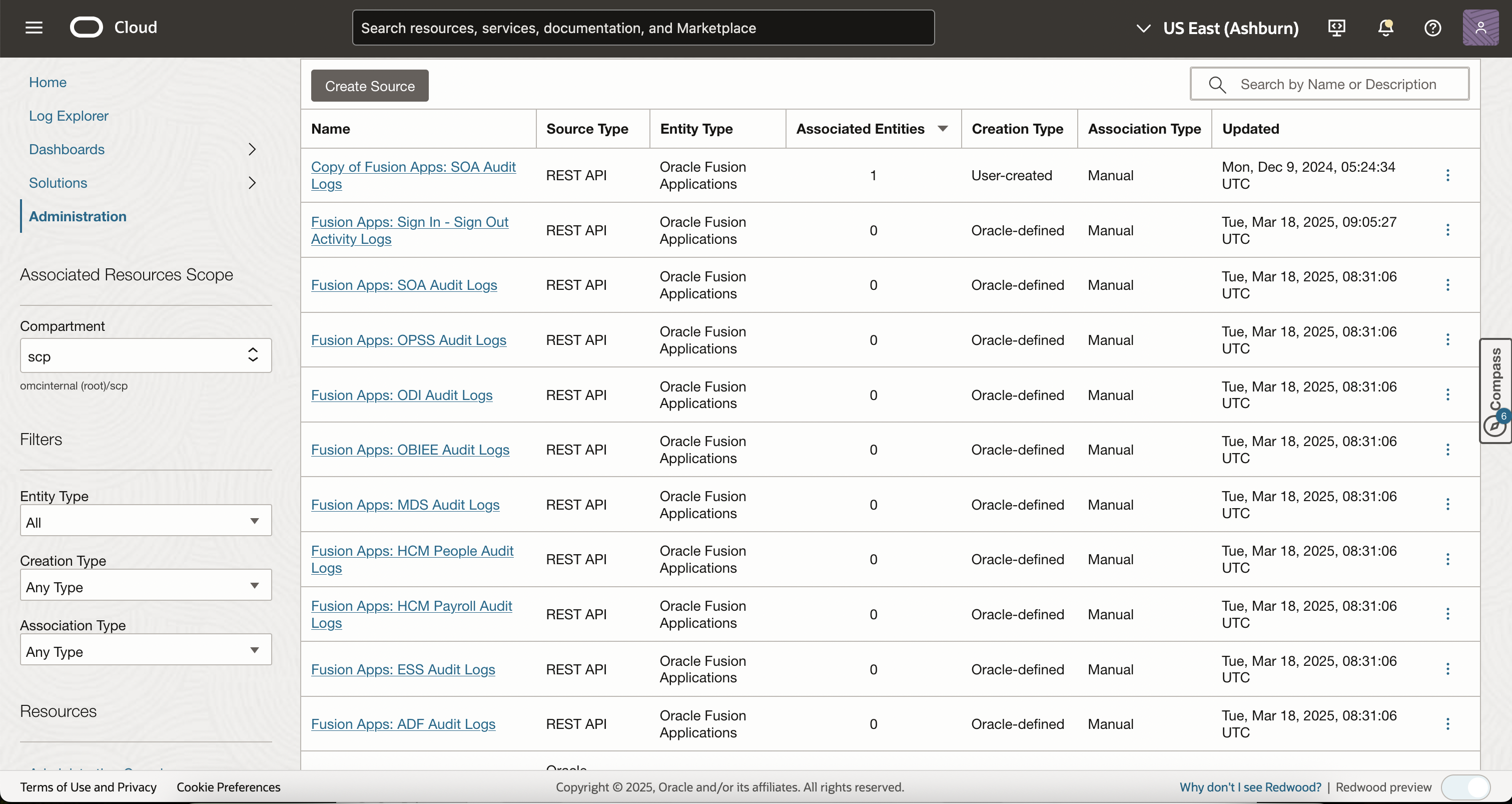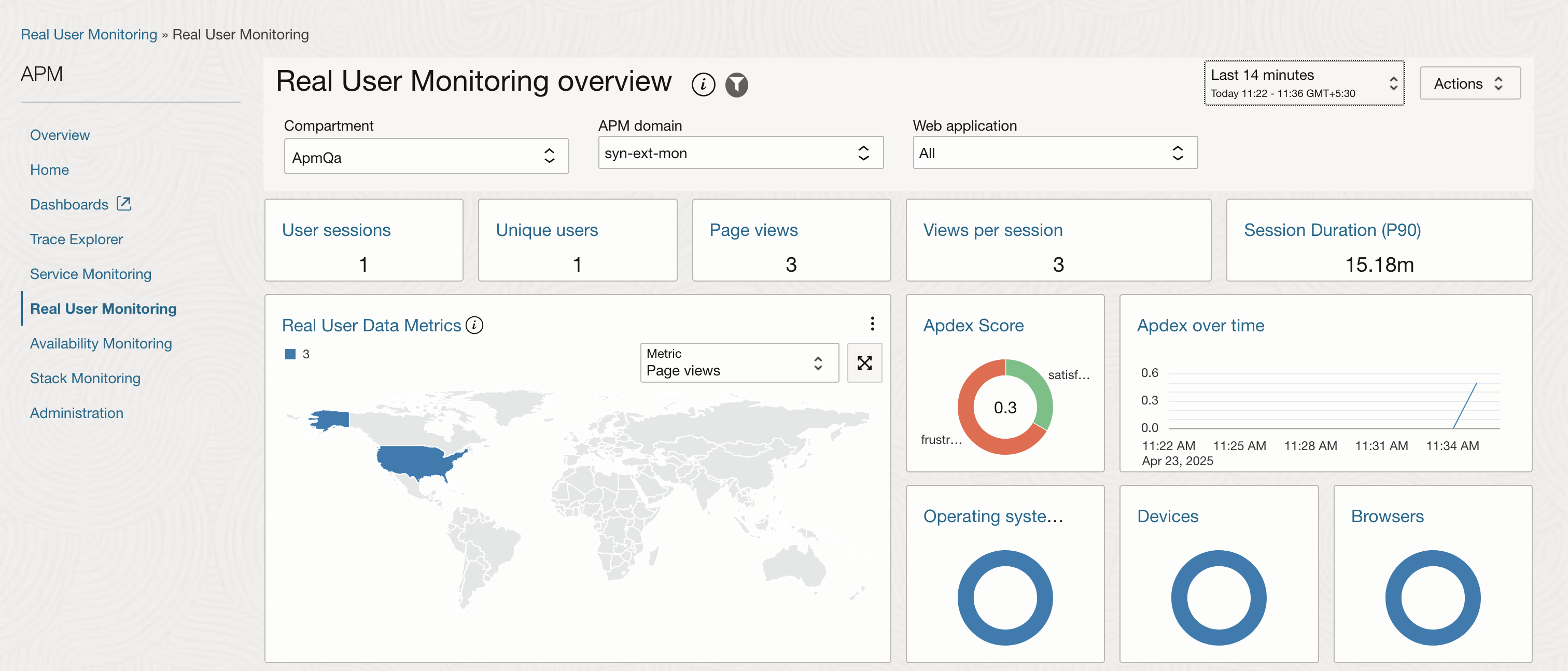Part 1: Making sense of what you can’t see: Observability for Oracle Fusion Applications
For teams managing cloud applications, visibility can feel like a constant challenge. There is an expectation to ensure uptime, performance, and security; even when the underlying infrastructure is not directly accessible. This is especially true with Oracle Fusion Applications where the infrastructure is fully managed by the provider, In this case: Oracle.
That is where observability becomes key; not just for monitoring purposes, but for understanding how applications behave, where things might break down, and how to respond effectively when they do.
This two-part blog series explores how Oracle Cloud Infrastructure (OCI) Observability services enable organizations to maintain visibility and support security and operational excellence in Oracle Fusion environments. In Part 1, the focus is on Application Performance Monitoring (APM); providing full-stack visibility into transactions, APIs, user experience, and performance.
The Foundational Role of Observability in Fusion Security
In Fusion environments, Oracle operates the application stack, services, underlying system logs, hardware-level metrics and infrastructure. Customers maintain control of the configurations, user access, integrations and business logic. While this model simplifies infrastructure management, it also introduces challenges when teams need to monitor application health, respond to performance issues, and maintain security oversight.
This is where observability provides the missing visibility layer. By collecting and correlating telemetry data; such as logs, metrics, and traces, Observability delivers a layer of insight that supports:
- Monitoring system availability and responsiveness
- Detecting anomalies before they impact business operations
- Tracing complex workflows and integrations across distributed components and services
- Supporting compliance and security through detailed auditing
In modern enterprise environments, observability is no longer an option; it is foundational to maintaining performance, integrity and a seamless delivery of Oracle Fusion Cloud services.
Core OCI Tools that Support Observability in Oracle Fusion Applications:
OCI provides a robust Observability and Management platform, designed to help deliver meaningful insights the performance, stability and security posture of Oracle Fusion Applications. Among its offerings, two core tools stand out as especially relevant for teams managing Fusion environments:
Application Performance Monitoring (APM)
OCI APM provides full-stack visibility into application health, backend service performance, and user interactions. It helps operations, development, and security teams detect, investigate, and resolve issues impacting business-critical workflows in Oracle Fusion Applications.
Key capabilities include:
- API Monitoring using Trace Explorer:
Continuously monitor representational state transfer (REST) and simple object access protocol (SOAP) APIs for latency, response time, and error rates that’s connect Fusion with internal or external systems. Supports early detection of degraded performance or availability issues.


- Business Transaction Tracking: Trace and
visualize business-critical workflows such as purchase orders, invoice approvals, or Human Capital Management Cloud (HCM) actions from the user interface (UI) to backend services. Helps enable identification of service tiers responsible for delays or errors. - Security Anomaly Detection:
Oracle continuously monitors API traffic for unusual patterns, such as repeated failed logins, irregular geolocation access, or unexpected payload activity. These insights help Oracle’s internal security teams rapidly detect and mitigate emerging threats, reducing the risk of zero-day exploits and enabling platform integrity. - Distributed Tracing:
Gain visibility into transactions across OCI-native services, such as Functions, Oracle Integration Cloud, and microservices; even in hybrid environments. Customers can view detailed traces in the Trace Explorer dashboard, including spans, timing breakdowns, and dependencies. This helps diagnose latency issues and perform precise root cause analysis for complex, multi-service transactions. - Real User Monitoring (RUM):
Collects frontend performance metrics such as time to first byte, DOM load, AJAX latency, and JavaScript errors across browsers and devices. Enables optimization of frontend behavior and helps correlate performance issues with specific user environments.

Benefits of OCI APM:
- Provides contextual, actionable insights that help teams accelerate issue diagnosis and remediation.
- Delivers visibility into application performance, enabling customers to optimize user experience and backend workflows.
- Helps organizations maintain service reliability and build confidence with stakeholders.
- Fosters collaboration across application, infrastructure, and security teams through a unified observability view.
- Integrates natively with OCI services such as Logging, Notifications, and Events for streamlined operations.
Application Performance Monitoring (APM) provides end-to-end visibility that enables teams to monitor, troubleshoot and optimize Oracle Fusion Applications proactively. Its combination of business transaction tracking, anomaly detection and deep contextual telemetry helps organizations manage complex workflows, reduce risk, and enhance operational stability.
In part 2 of this series, we will continue by exploring OCI Logging Analytics and additional OCI services that complete the observability picture for Oracle Fusion Applications.

